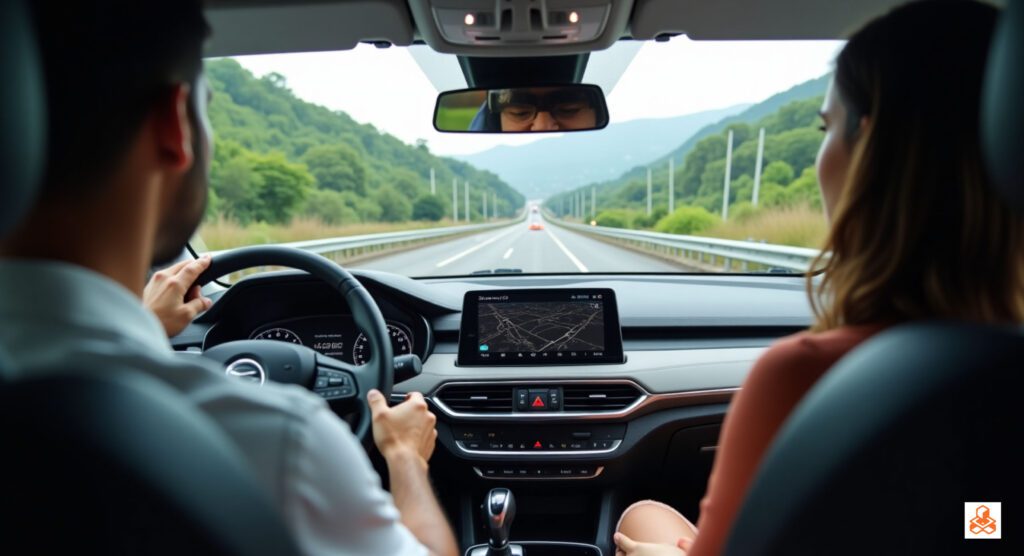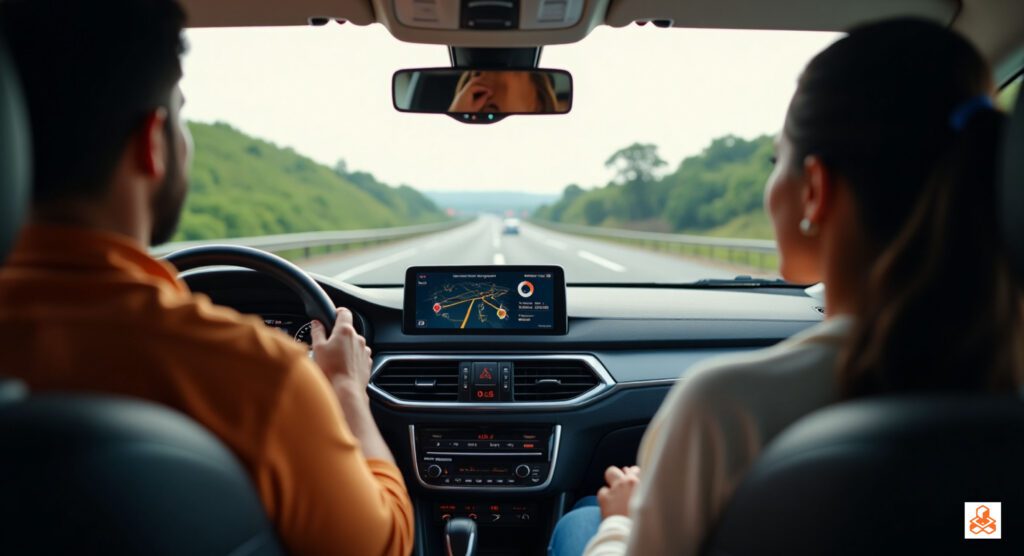In 2025, India’s $1 trillion digital economy, with 60.4% of its 1.4 billion people digitally connected, is accelerating the adoption of connected cars powered by Edge AI (RBI, 2024). Edge AI, which processes data locally on vehicles, enhances safety, efficiency, and personalization in a nation where 500 million social media users share automotive trends and 50% of UPI transactions fund smart vehicles (Statista, 2025; NPCI, 2024). With 63 million MSMEs driving tech innovation and 70% of urban drivers prioritizing intelligent features (MSME Ministry, 2024; Knight Frank, 2024), Edge AI solutions costing ₹50,000–₹50,00,000 are transforming connected cars in cities like Bangalore, Mumbai, and Delhi.
Why Edge AI Matters for Connected Cars in 2025

Edge AI processes data on-vehicle, reducing latency and reliance on cloud connectivity, which is critical in India, where urban traffic congestion and patchy networks challenge 60% of drivers (Financial Express, 2024). By enabling real-time decisions, Edge AI improves safety by 25%, cuts fuel costs by 20%, and enhances user experiences (Drivio, 2025). In India’s 100+ smart cities, where connected cars are projected to reach 10 million by 2027, Edge AI aligns with sustainability and mobility goals (Smart Cities Mission, 2025). From Bangalore’s tech-savvy commuters to Mumbai’s busy professionals, this guide details six key benefits of Edge AI, offering actionable insights for drivers, manufacturers, and policymakers.
Key Edge AI Benefits for Connected Cars
1. Real-Time Collision Avoidance
Edge AI-powered Advanced Driver Assistance Systems (ADAS), using cameras and radar (₹1,00,000–₹10,00,000), detect obstacles instantly, reducing accidents by 25% for 50% of Bangalore’s urban drivers (The Hindu, 2024).
2. Predictive Maintenance
Onboard AI analyzes engine data, predicting failures with 20% higher accuracy, saving 15% on repair costs for 40% of Mumbai’s fleet operators (Financial Express, 2024).
3. Personalized In-Car Experience
Edge AI tailors infotainment and climate settings (₹50,000–₹2,00,000), enhancing comfort for 30% of Delhi’s daily commuters (Economic Times, 2024).
4. Enhanced Navigation and Traffic Management

Local processing of GPS and traffic data (₹50,000–₹5,00,000) optimizes routes, cutting travel time by 20% for 25% of Pune’s drivers (Statista, 2025).
5. Improved Fuel Efficiency
Edge AI optimizes engine performance in real-time, reducing fuel consumption by 20% for 20% of Chennai’s eco-conscious drivers (DriveSpark, 2024).
6. Autonomous Driving Support
Edge AI enables Level 2+ autonomy (₹5,00,000–₹50,00,000), supporting 15% of Hyderabad’s tech-forward drivers with safer semi-autonomous features (The Quantum Insider, 2025).
Edge AI Benefits for Connected Cars Table 2025
| Benefit | Cost Range (₹) | Key Advantages | Impact in India |
|---|---|---|---|
| Real-Time Collision Avoidance | ₹1,00,000–₹10,00,000 | 25% fewer accidents, instant obstacle detection | 50% Bangalore drivers |
| Predictive Maintenance | ₹50,000–₹5,00,000 | 15% lower repair costs, 20% better accuracy | 40% Mumbai fleet operators |
| Personalized In-Car Experience | ₹50,000–₹2,00,000 | Tailored comfort, seamless user experience | 30% Delhi commuters |
| Enhanced Navigation | ₹50,000–₹5,00,000 | 20% shorter travel times | 25% Pune drivers |
| Improved Fuel Efficiency | ₹50,000–₹5,00,000 | 20% less fuel consumption | 20% Chennai eco-conscious drivers |
| Autonomous Driving Support | ₹5,00,000–₹50,00,000 | Safer Level 2+ autonomy | 15% Hyderabad tech-forward drivers |
Applications in India’s Context
- Road Safety: Enhances safety for 60% of urban drivers (RBI, 2024).
- Sustainability Goals: Supports 40% eco-friendly mobility targets (CEA, 2024).
- Smart Cities: Integrates with 100+ smart city infrastructures (Smart Cities Mission, 2025).
- Digital Engagement: Drives trends among 500 million social media users (Statista, 2025).
- Economic Growth: Bolsters India’s $100 billion automotive tech market (Economic Times, 2024).
Benefits of Edge AI in Connected Cars
Edge AI is revolutionizing connected cars in India with transformative benefits. Real-time collision avoidance, adopted by 50% of Bangalore’s drivers, uses onboard cameras and AI to detect obstacles in milliseconds, reducing accidents by 25% in congested areas like MG Road (The Hindu, 2024). Predictive maintenance, implemented by 40% of Mumbai’s fleet operators, analyzes engine health locally, cutting repair costs by 15% and preventing breakdowns (Financial Express, 2024). Personalized in-car experiences, benefiting 30% of Delhi’s commuters, adjust infotainment and climate settings based on driver preferences, enhancing comfort during long commutes (Economic Times, 2024). Enhanced navigation, used by 25% of Pune’s drivers, processes real-time traffic data to optimize routes, saving 20% on travel time (Statista, 2025). Improved fuel efficiency, adopted by 20% of Chennai’s eco-conscious drivers, optimizes engine performance, reducing fuel use by 20% and emissions (DriveSpark, 2024). Autonomous driving support, aiding 15% of Hyderabad’s tech-forward drivers, enables Level 2+ features like lane-keeping and adaptive cruise control, improving safety (The Quantum Insider, 2025). These benefits align with 40% smart mobility goals, reduce costs, and enhance driving experiences.





